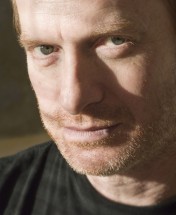A Visionary of Self-Expression: An Interview with Photographer Janusz Kawa
GALO: You’ve photographed for an array of renowned publications such as GQ, The New York Times Magazine, Cosmopolitan, and Australian and French Vogue. Not to mention, the array of album covers and photo shoots you did for various celebrities including Morgan Freeman and, I believe, Luciano Pavarotti. Is there a particular shoot that you have a fond memory of?
JK: Yes, it wasn’t Luciano Pavarotti (never photographed him), but Placido Domingo. He taught me one lesson – that as a photographer you are like a trainer with a tiger in the cage. When you shoot a portrait, you train your eye and energy on the subject, and you don’t let go until you get the perfect picture.
GALO: Your job involves working with various people, such as models, of different temperaments and personalities. Have you ever experienced any difficulties due to this while photographing for a magazine or other medium? What do you do when such difficulties arise?
JK: One is like [a] psychologist dealing with the situation of the moment. You have to understand the personalities and make everyone at ease. You must be very patient and understanding and very professional. All the responsibility of the success of the shoot rests on [the] photographer’s shoulders.
GALO: What are your key interests within the business?
JK: I don’t think of photography as business, I think of it as an art form and self-expression.
GALO: You’ve often been named a mastermind of lighting techniques when working on set. What techniques do you like to use?
JK: German Expressionist painting and film, and all the other art forms, have always inspired me. Films, such as film noir, and directors such as Orson Welles, Ingmar Bergman [and] Andrei Tarkovsky, always inspire my lighting. These people have created masterpieces because of their lighting.
GALO: What is your workflow like while working on a shoot for a magazine? Is the process the same for you when you are taking photographs for your own aspirations?
JK: The process is different when one is working for a magazine. You answer to the Art Director or the Editor and you have to compromise the final result. And by compromise I don’t mean that it’s something less, but the photographer is hired by the magazine and the Art Director to transcend their vision. When one is working on [a] personal art project, the only person one is responsible to is oneself. What is good, what is finished, and what should be published – the photographer decides.
GALO: In general, during a session how many photographs do you take to find the perfect one or the perfect set?
JK: I like to shoot a lot. Sometimes it takes several hundred to get the one that is perfect.
GALO: Could you describe what you do in three words?
JK: Concept, preparation, execution.
GALO: Is there a certain photo from either one of your shoots or one from your own personal collection that you are most attached to or predominantly proud of?
JK: Every one of the images I take has its own history. I try not be attached to those images, they speak for themselves and to others. They must live on their own.
GALO: Do you enjoy exhibiting your work in galleries?
JK: Exhibiting your work is the time you really try to communicate your emotions through images to the world, so it is very exciting to be showing in a gallery, but at the same time it is very scary, because one is never sure if the audience will understand what you are communicating or what your work is about.
(Article continued on next page)

